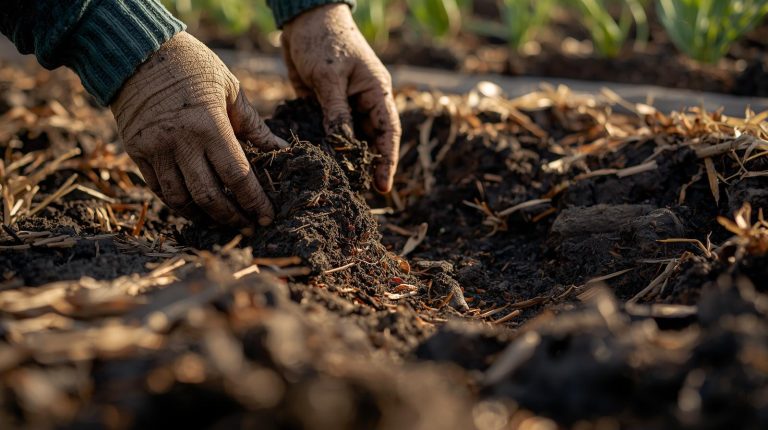Indoor gardening can be a rewarding and fulfilling hobby, but it’s not without its challenges. One thing you may not know is that pests can wreak havoc on your indoor plants. But fear not, because we have the top practices for indoor gardening pest control!
We, as fellow indoor gardeners, understand the desire to create a thriving and pest-free environment for our plants. In this guide, we will explore common indoor garden pests, preventive measures to keep them at bay, and organic pest control methods that are safe for both you and your plants.
By monitoring and inspecting your plants regularly, as well as troubleshooting and treating any pest infestations, you can ensure the health and vitality of your indoor garden.
Let’s dive in and conquer those pesky pests together!
Identify Common Indoor Garden Pests
To effectively manage indoor garden pests, it’s crucial that we first become familiar with the common types of pests that may infest our plants. Identifying these pests is the first step towards finding suitable solutions.
One common pest is the aphid, a small insect that feeds on plant sap and reproduces rapidly. Another pest to watch out for is the spider mite, which can cause damage by feeding on plant cells. Fungus gnats are also common indoor garden pests, especially in moist environments.
To combat these pests, we can use natural remedies such as neem oil or insecticidal soaps. Additionally, incorporating pest resistant plants into our indoor gardens can provide an added layer of protection.
Implement Preventive Measures
To effectively manage and control indoor garden pests, we can take proactive steps by implementing preventive measures. By understanding pest life cycles, we can anticipate their behavior and prevent infestations.
Here are some top practices for implementing natural remedies and preventing pests in indoor gardens:
- Regularly inspect plants for signs of pests, such as yellowing leaves or webbing.
- Keep the indoor garden clean and free from debris, as pests thrive in cluttered environments.
- Introduce beneficial insects, like ladybugs or nematodes, which naturally prey on common indoor garden pests.
By implementing these preventive measures, we create an environment that’s less attractive to pests and reduces the need for chemical interventions. Understanding the life cycles of pests allows us to disrupt their reproductive processes and control their populations more effectively.
Together, we can create thriving indoor gardens that are pest-free and provide a sense of belonging to the gardening community.
Choose Organic Pest Control Methods
We can further enhance our indoor gardening pest control by choosing organic methods that prioritize the health and well-being of our plants and the environment.
Opting for organic pest control methods not only helps to keep pests at bay but also offers numerous benefits. By using natural remedies, we can effectively control pests without resorting to harmful chemicals that can negatively impact the environment and our plants.
DIY organic pest control methods involve using ingredients such as vinegar, neem oil, and garlic, which are readily available and safe to use. These natural remedies aren’t only effective in controlling pests but also promote a healthier ecosystem within our indoor gardens.
Monitor and Inspect Plants Regularly
By regularly monitoring and inspecting our plants, we can proactively identify and address any pest issues that may arise in our indoor gardens. Pest prevention and early detection are crucial in maintaining the health and vitality of our plants.
Here are three key reasons why monitoring and inspecting our plants regularly is essential:
- Identify signs of pest infestation: By closely examining our plants, we can spot early signs of pest damage, such as chewed leaves, discolored foliage, or webbing. This allows us to take immediate action and prevent further spread.
- Assess plant health: Regular inspections help us evaluate the overall health of our plants. Any decline in growth, wilting, or stunted development could indicate an underlying pest problem that needs attention.
- Implement targeted treatments: When we monitor our plants consistently, we can tailor our pest control measures based on the specific pests present. This ensures that we use the most effective treatments, minimizing potential harm to our plants and the environment.
Troubleshoot and Treat Pest Infestations
Regular monitoring and inspection of our plants allows us to promptly address and resolve any pest infestations that may occur in our indoor gardens. When dealing with pest infestations, it’s important to consider natural remedies and pest-resistant plants as effective solutions.
Natural remedies can be a great alternative to chemical pesticides, as they’re safer for both us and our plants. For example, using a mixture of water and soap can effectively control aphids and spider mites. Neem oil is another natural remedy that can help combat a wide range of pests, including mealybugs and scale insects.
In addition to natural remedies, incorporating pest-resistant plants into our indoor gardens can prevent infestations from occurring in the first place. Plants like lavender, rosemary, and marigold are known for their pest-repelling properties. By including these plants in our garden, we can create a natural barrier against unwanted pests.
Conclusion
In conclusion, by implementing these top practices for indoor gardening pest control, you can ensure the health and vitality of your plants.
From identifying common pests to choosing organic pest control methods, monitoring and inspecting regularly, and troubleshooting infestations, you’ll have the knowledge and expertise to keep your indoor garden pest-free.
So why wait? Take control of your indoor garden and create a thriving oasis free from unwanted pests.




